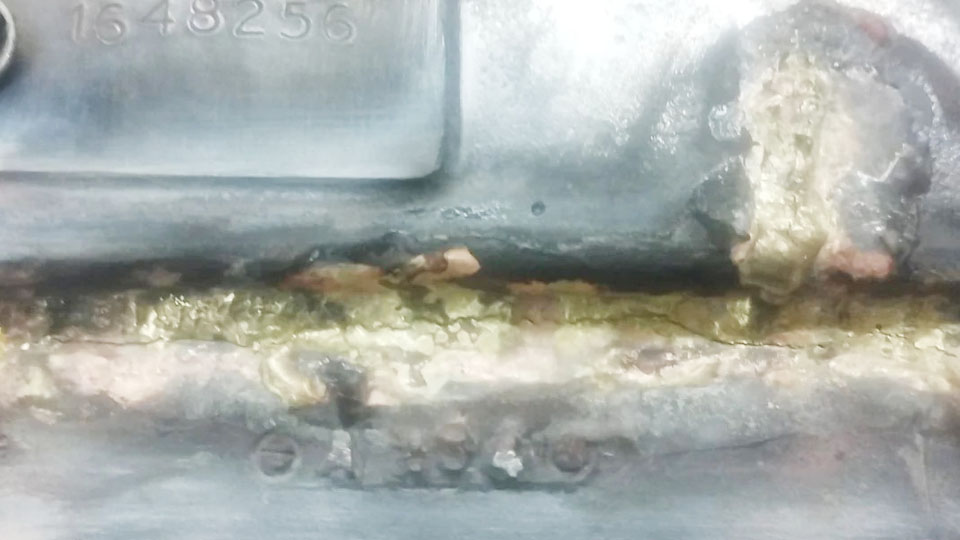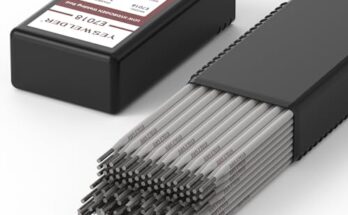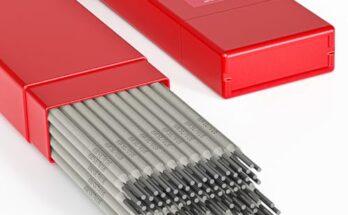Cast iron is one of the trickiest metals to repair. It’s brittle, full of carbon, and prone to cracking under heat. If you’ve ever tried to weld it using traditional arc welding, you know that things can go wrong fast. That’s where brazing comes in.

Image by reddit
Brazing cast iron is an excellent alternative to fusion welding because it uses lower temperatures and creates a strong, flexible bond. It doesn’t melt the base metal like welding does, which means it reduces stress and cracking.
I’ve worked on many cast iron repairs using brazing techniques, and I can tell you that when done right, it creates solid, reliable joints.
Let’s go through everything you need to know about brazing cast iron, including the right materials, preparation, and step-by-step techniques.
What is Brazing and Why Use it for Cast Iron?
Brazing is a process that joins metal by melting a filler material—usually a brass or bronze-based alloy—at a temperature lower than the melting point of the base metal. Unlike welding, which melts the metal and fuses it together, brazing simply bonds the filler material to the surface.
Cast iron is difficult to weld because it contains a high level of carbon, making it brittle and prone to cracking when exposed to rapid heating and cooling. Brazing solves this problem by using lower heat, reducing stress on the cast iron.
Advantages of Brazing Cast Iron
- Prevents cracking – The lower heat input avoids thermal shock.
- Strong bond – Brazed joints can be just as strong as welded ones.
- Less distortion – Because brazing doesn’t melt the cast iron, there’s minimal warping.
- Works on old or dirty cast iron – Brazing can work even when the cast iron isn’t in perfect condition.
Choosing the Right Filler Material for Brazing Cast Iron
The filler material is crucial in brazing. You’ll need a high-quality brazing rod that can bond well with cast iron. Here are the most common options:
| Filler Material | Characteristics |
|---|---|
| Bronze (Silicon Bronze, Phosphor Bronze) | Good strength, corrosion resistance, and easy to flow. |
| Brass (Copper-Zinc Alloys) | Stronger but requires more heat than bronze. |
| Nickel-Silver Alloy | High strength, excellent wear resistance, and good machinability. |
For most cast iron repairs, silicon bronze rods work best because they flow easily and create a strong, ductile joint. If more strength is needed, nickel-silver is a great choice.
Preparing Cast Iron for Brazing
Proper preparation is the key to a strong brazed joint. Since cast iron often has oil, rust, and carbon deposits, you must clean it thoroughly before brazing.
Cleaning the Surface
- Remove paint, grease, and oil – Use a degreaser or burn off contaminants with a torch.
- Grind or sand the surface – A wire brush or grinder helps expose clean metal.
- Preheat to remove embedded oil – Some cast iron, like engine blocks, can absorb oil. Slowly heating it will burn off any oil trapped in the pores.
Preheating Cast Iron Before Brazing
Cast iron doesn’t like sudden temperature changes. That’s why preheating is critical. Heat the metal slowly to at least 500°F–800°F to reduce thermal stress. You can use a propane torch, oxy-acetylene torch, or an oven for this step.
Step-by-Step Guide to Brazing Cast Iron
Now that the surface is clean and preheated, let’s go through the brazing process.
Step 1: Heat the Base Metal, Not Just the Rod
Unlike welding, brazing requires you to heat the cast iron first—not the filler rod. Use a neutral or slightly reducing flame with an oxy-acetylene torch. Move the flame in slow circles, heating the area evenly.
Step 2: Apply Flux
Flux is essential for a clean, strong bond. It removes oxides and helps the filler metal flow. Apply a high-temperature flux that matches your filler material, usually borax-based flux.
Step 3: Add the Filler Metal
Once the cast iron is hot enough, bring the brazing rod into contact with the metal. It should melt and flow into the joint naturally. Avoid overheating—the goal is to let the filler metal bond, not burn.
Step 4: Control Cooling
Just like preheating, slow cooling is necessary. Let the cast iron cool down gradually to prevent cracks from forming. You can:
- Cover it with an insulating blanket
- Place it in warm sand or ashes
- Put it in an oven and lower the temperature slowly
Common Mistakes to Avoid
Even with careful preparation, things can go wrong. Here are some mistakes I’ve seen (and made) over the years.
Overheating the Cast Iron
Too much heat can burn out the carbon in the metal, making it brittle. Keep the flame moving and avoid prolonged exposure in one spot.
Not Using Enough Flux
Flux is crucial for removing oxidation. Without it, the filler won’t bond properly.
Skipping Preheating
Trying to braze cold cast iron often results in cracking. Always preheat to at least 500°F.
Rapid Cooling
Cooling cast iron too fast is a recipe for failure. Let it cool down slowly, or you’ll risk stress cracks.
When to Use Brazing Instead of Welding
There are times when brazing is a better option than traditional welding. If you’re unsure, here’s a quick comparison:
| Situation | Brazing | Welding |
|---|---|---|
| Thin Cast Iron Parts | ✅ Best option | ❌ High risk of warping |
| Old or Dirty Cast Iron | ✅ More forgiving | ❌ Requires very clean metal |
| Low Heat Tolerance Areas | ✅ Lower heat input | ❌ High risk of cracks |
| High-Stress Joints | ❌ Not ideal | ✅ Stronger fusion bond |
Brazing works best when you need a low-heat, crack-resistant repair. However, for high-strength, load-bearing parts, welding might still be the better choice.
Conclusion
Brazing cast iron is a fantastic way to create strong, reliable repairs without the risks of traditional welding. By using the right filler material, preheating the metal properly, and following the correct brazing techniques, you can avoid cracks and achieve a long-lasting bond.
I’ve used brazing for everything from old engine blocks to cast iron machinery, and when done right, the results are impressive. The key is patience, proper heat control, and slow cooling. If you follow these steps, you’ll be able to repair cast iron like a pro.
FAQs
Can I braze cast iron with a propane torch?
Yes, but an oxy-acetylene torch is better for larger repairs because it provides more heat.
What type of flux should I use for brazing cast iron?
A borax-based flux works best for removing oxidation and helping the filler metal flow.
Do I need to preheat cast iron before brazing?
Yes, preheating to 500°F–800°F reduces stress and prevents cracking.
How strong is a brazed joint compared to welding?
Brazed joints are very strong, but they don’t fuse the metals like welding does. They work best for low-stress applications.
What’s the best way to cool cast iron after brazing?
Let it cool slowly in an oven, under a blanket, or buried in sand to prevent cracks.







